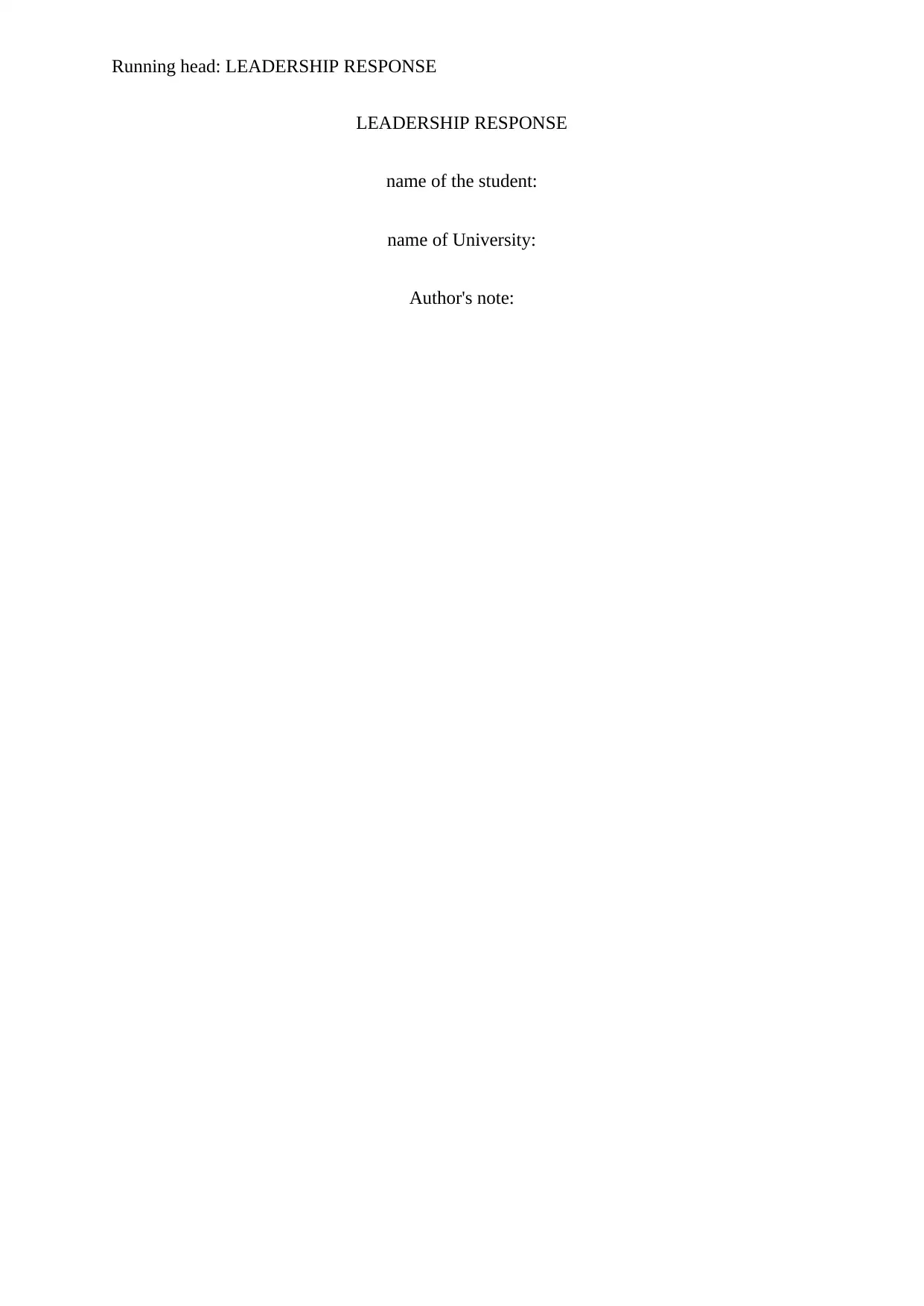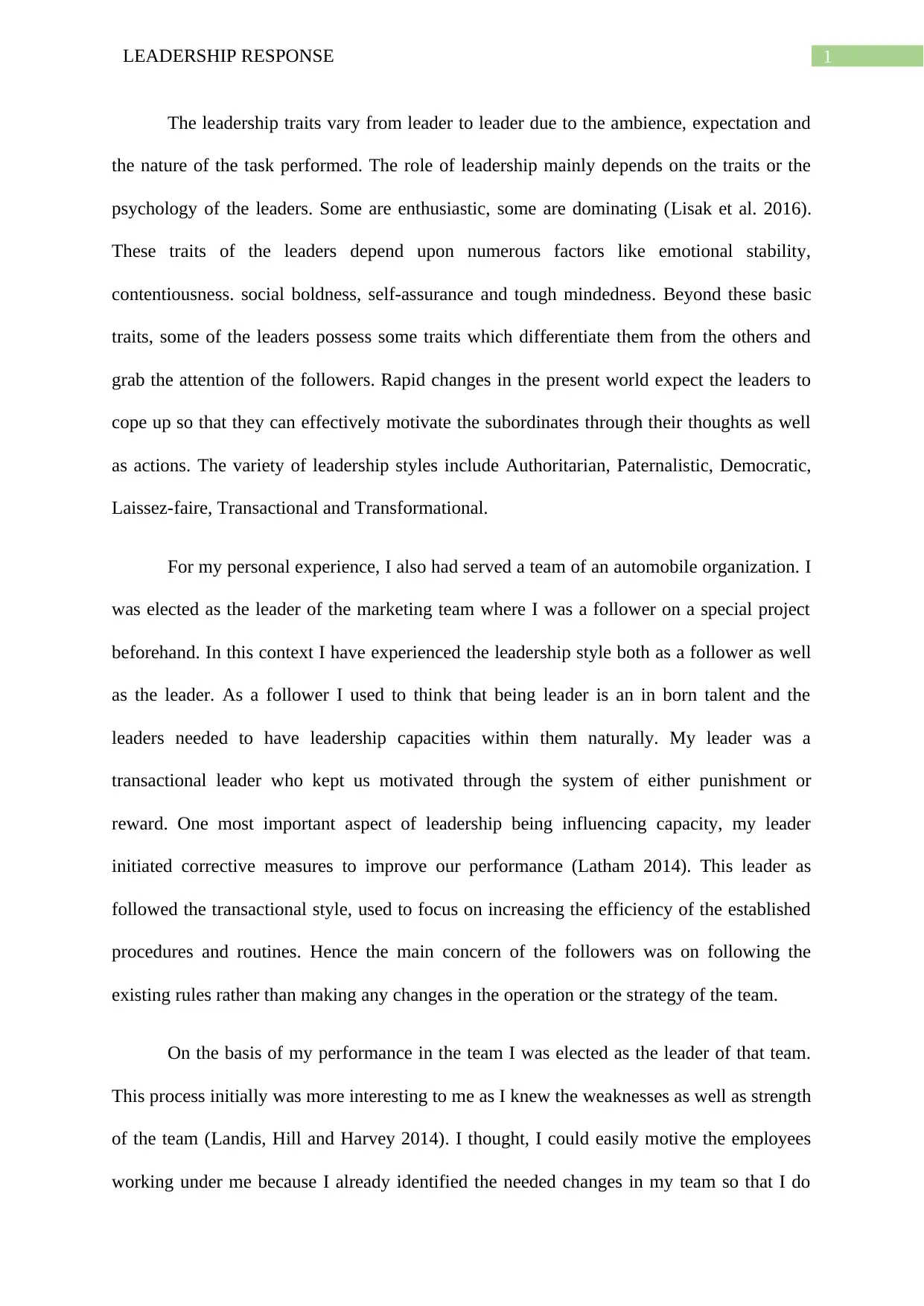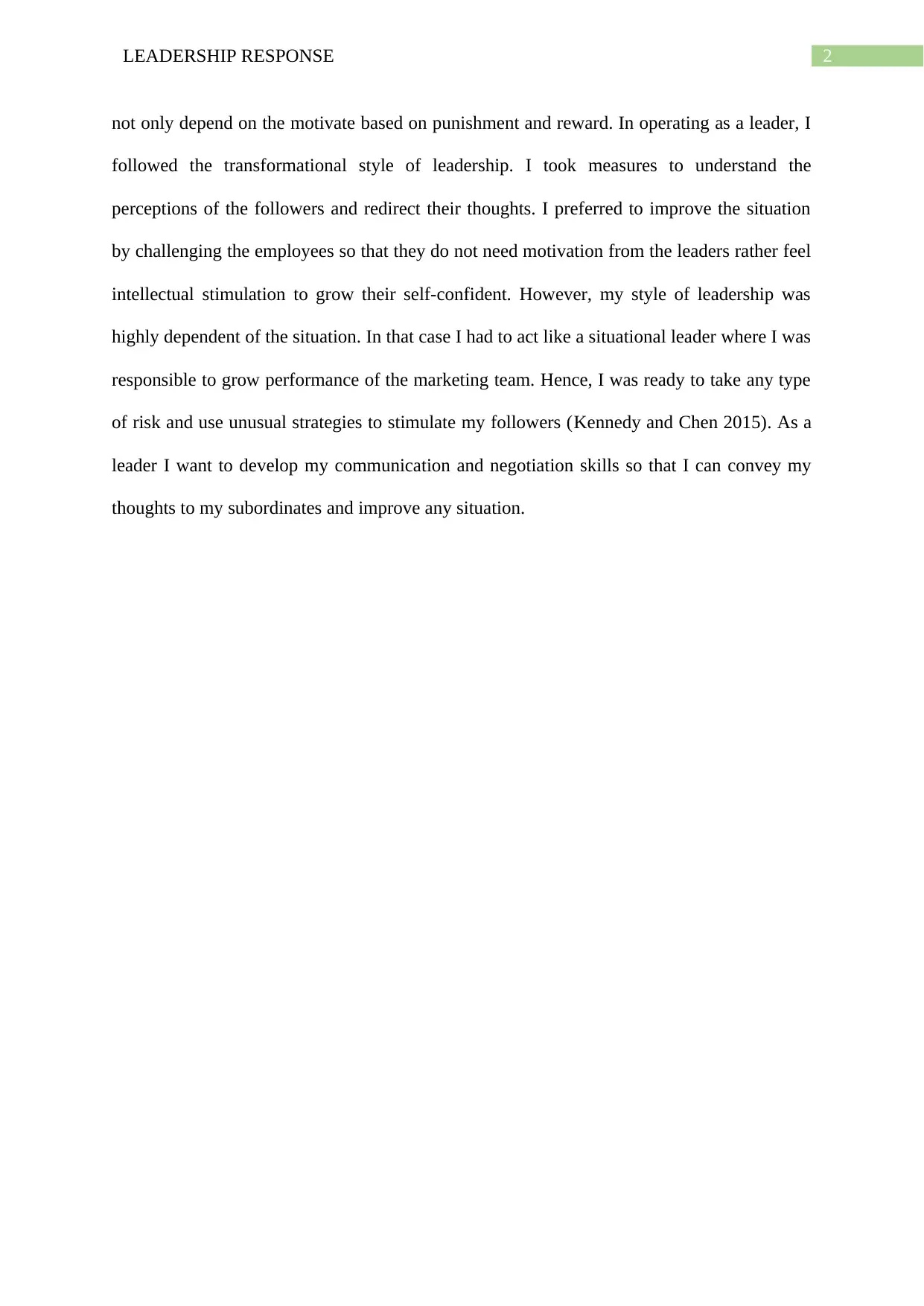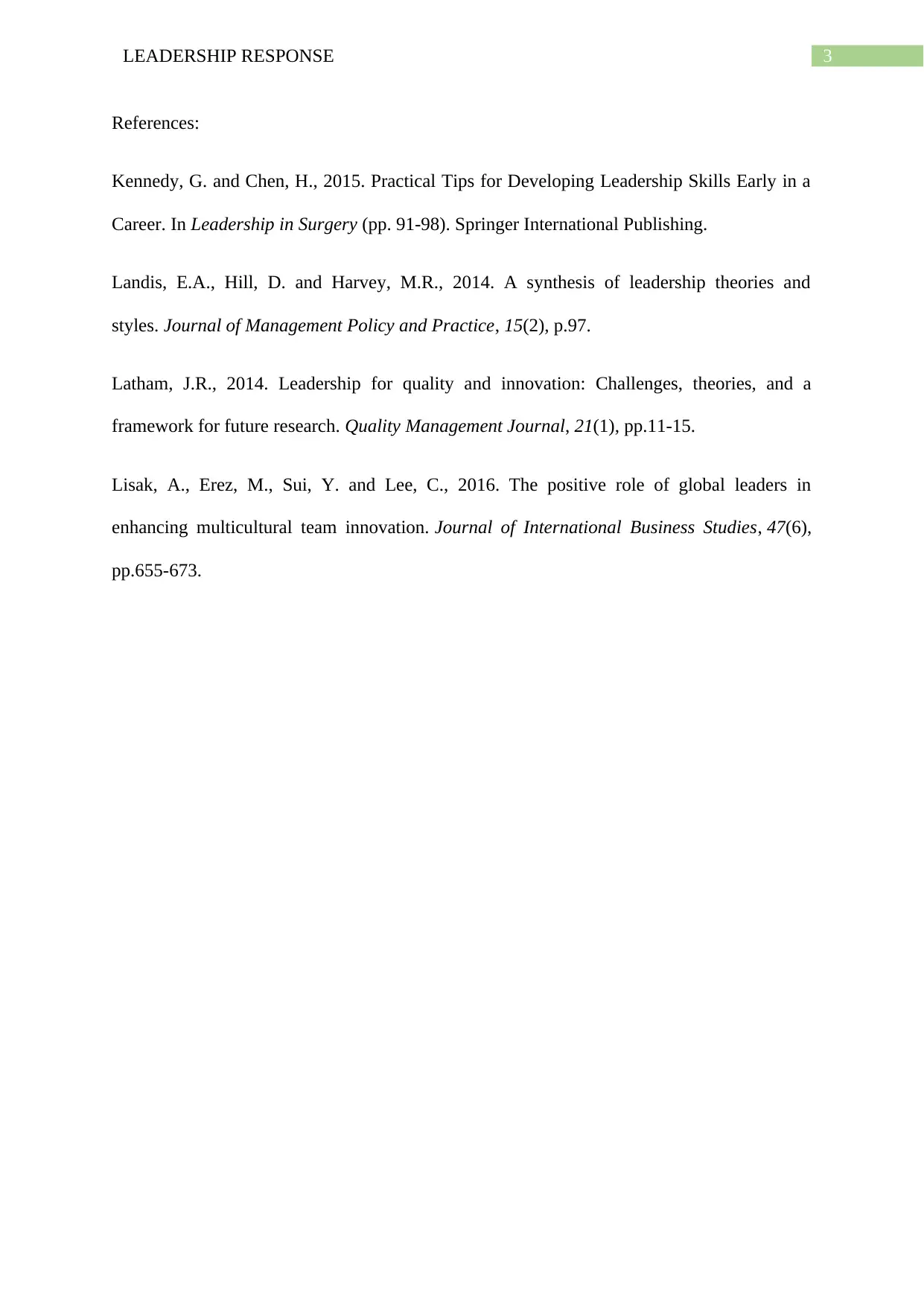KMGT 633 - Leadership Response: Traits, Styles, and Application
VerifiedAdded on 2023/06/09
|4
|736
|363
Essay
AI Summary
This essay provides a leadership response based on personal experience within an automobile organization, contrasting the roles of a follower and a leader. It discusses various leadership styles, including transactional and transformational leadership, and their impact on team motivation and performance. The author reflects on their experience as a marketing team leader, transitioning from being motivated by a transactional leader using reward and punishment to adopting a transformational style focused on intellectual stimulation and employee growth. The essay also touches upon the importance of situational leadership and the development of communication and negotiation skills for effective leadership. The student document is available on Desklib, a platform offering a wide array of study tools and solved assignments for students.
1 out of 4











![[object Object]](/_next/static/media/star-bottom.7253800d.svg)